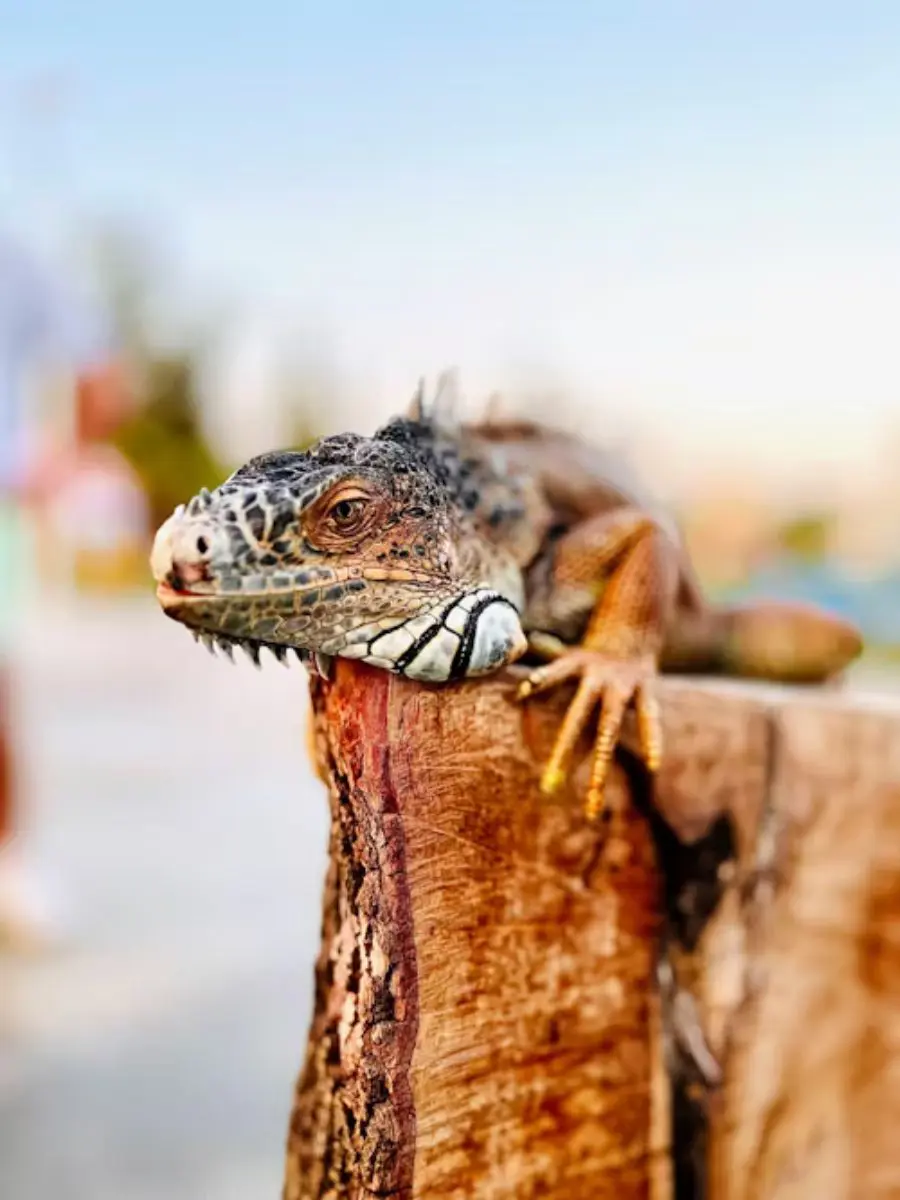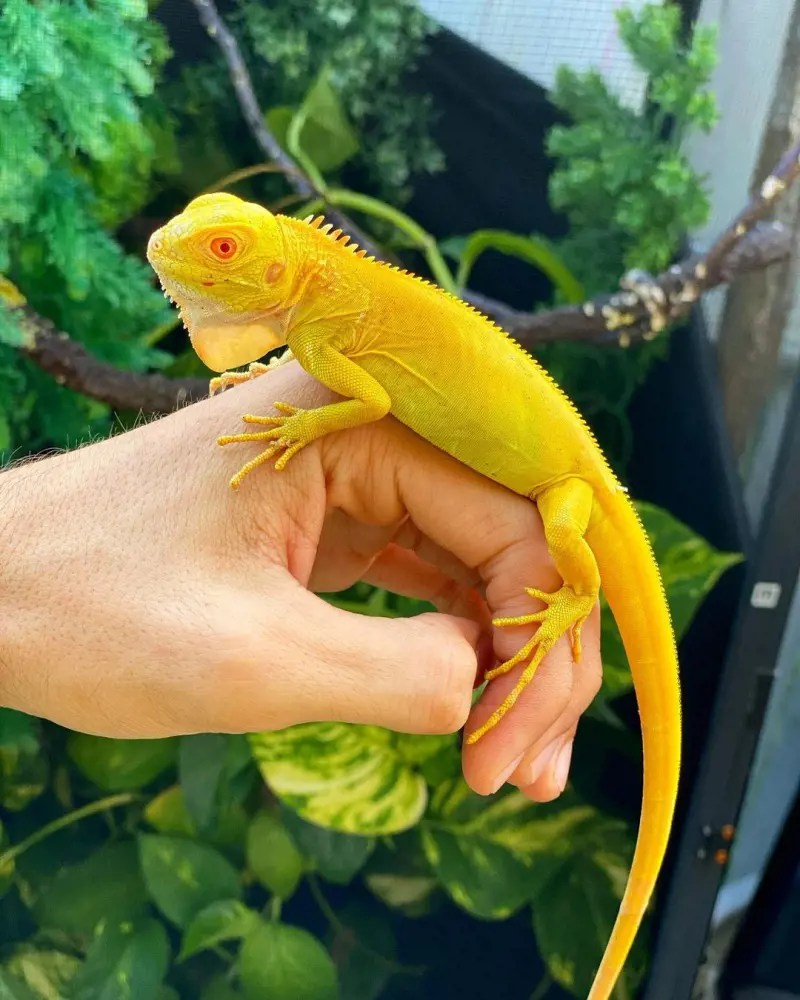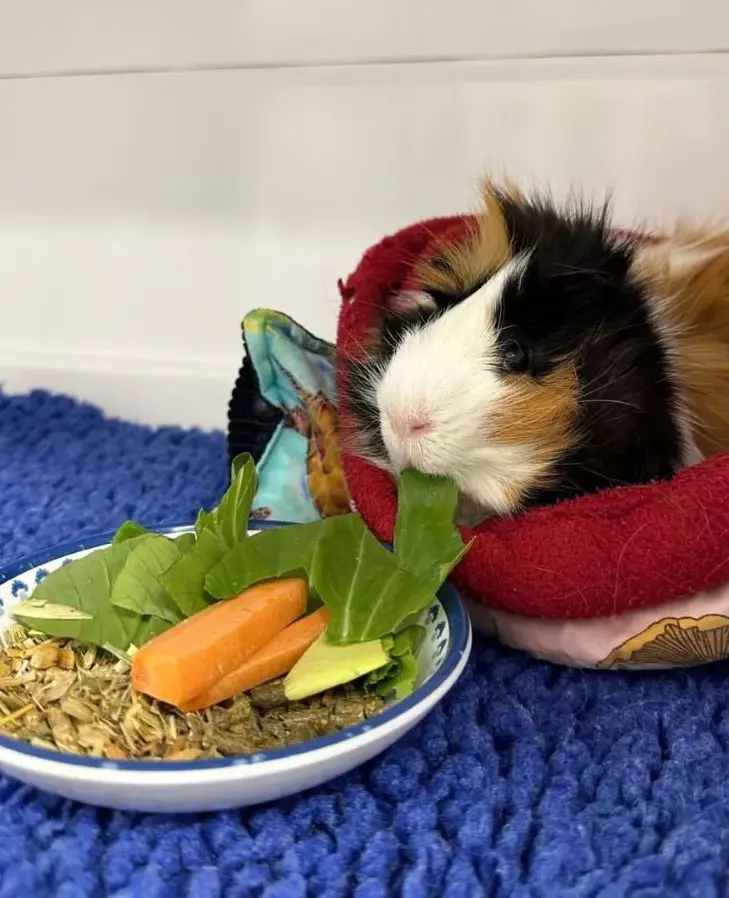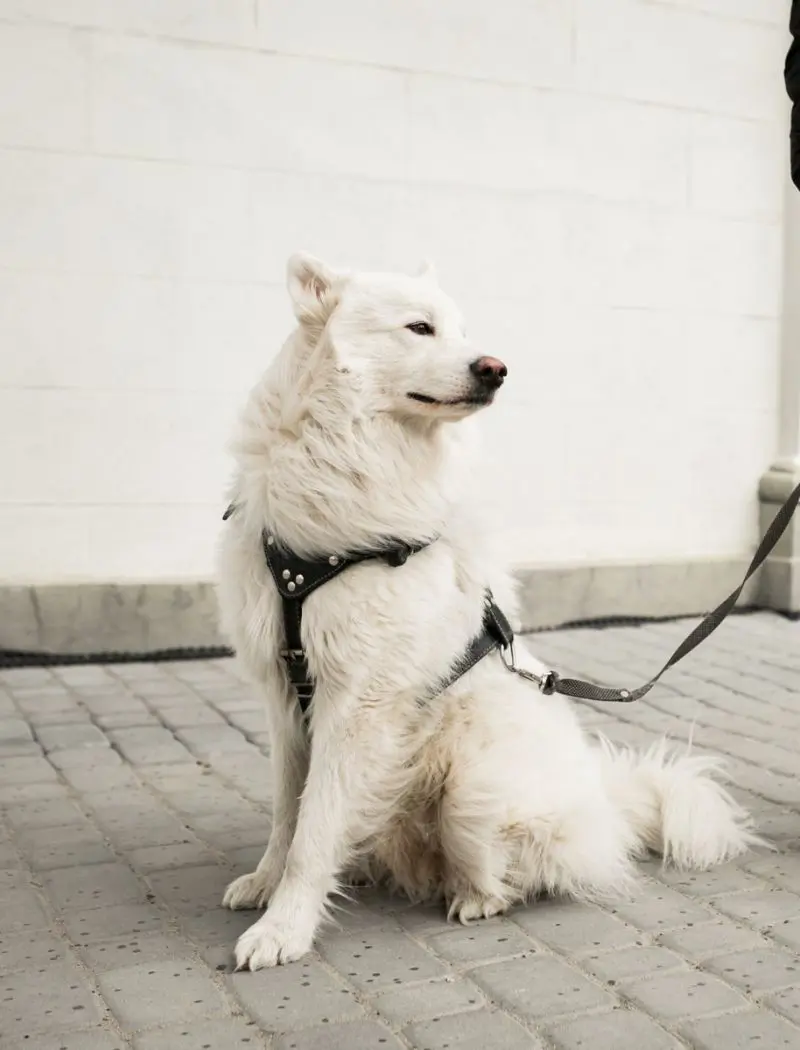Briard Dog: Breed Information, Characteristics And Care Guide

If you are a potential pet parent looking to adopt a large and strong but gentle dog breed, the Briard dog is the perfect choice. With their innocent looks and flowing hair, these dogs demand attention and love from humans.
Although Briard dogs aren't yet a common household breed in the US - ranking at 150th position on the AKC (American Kennel Club) popularity chart, their influence is growing all over.
Today, we discuss some key information about the Briard breed, along with vital details on its characteristics and care requirements.
Briard Dog Breed Profile

A large breed, Briard is iconic for its long and flowing hair that partially covers its eyes. These herding dogs are bred to survive frigid temperatures and herd cattle in icy conditions.
Due to their large size, the Briard dog can also store significantly more energy than most breeds, allowing it to work long hours without getting tired. On average, these canines can work 6-8 hours a day in intervals when performing tasks such as herding livestock or participating in outdoor activities like hiking.
How Big Do Briard Dogs Get?
Male Briards are typically bigger than their female counterparts. An average adult male normally has a shoulder height of around 23 to 27 inches, whereas an adult female can grow to around 23 to 27 inches.
Similarly, in terms of weight, males weigh about 75-100 lbs, while females range from 55 to 85 lbs. The breed's size, however, can differ based on genetics and lifestyle. In fact, the largest Briards can reach weights over 110 pounds, though such cases are rare. Despite their size, Briards are agile and versatile, making them excellent working and companion dogs.
Coat Colors And Patterns

While Briard dogs come in a variety of coat colors, solid shades of black, fawn, and gray are generally considered the breed standard. Fawn is the most common color for Briards, but black Briards are also widespread. Both fawn and black are traditional colors closely associated with the breed.
Rarely, Briards can exhibit white markings or coat colors outside the breed standard, such as a brindled or piebald pattern. However, these are not frequent and may not meet confirmation standards.
Breed Origin And History

Originally from France, the Briard dog was developed during the Middle Ages. The breed was primarily created as a herding and guarding dog for sheep and other livestock.
Although the exact origin of the breed cannot be accurately placed, recorded history shows the Briard has been in existence since at least the 8th century. The dog possibly descends from local French herding dogs, with possible influence from the now-extinct Barbet or other shaggy-coated working breeds. Experts even speculate that the Beauceron, another French herding dog, may share ancestry with the Briard.
During the French Revolution, the Briard gained popularity as a guard and military dog, extending its recognition beyond farm life. By the late 19th century, the Briard had become well-established and was officially recognized by French kennel organizations.
Briard Dog Personality Traits

If you were to describe the personality in one word, the only fitting term would be "gentle". While confident and physically strong, these dogs rarely become aggressive, unless they are feeling threatened by something or someone.
These large canines are also wary of or cautious around strangers, but this is more a sign of their protective instinct rather than shyness. Meanwhile, they are attached to their families, and are often called velcro dogs due to their desire to always be close to their owners.
These are some major personality traits that most Briards dogs exhibit:
1. Loyal
The loyalty that these dogs possess for their families is what made them so popular as housepets. As they are naturally vigilant, these canines always prioritize their family's safety by serving as excellent watchdogs.
However, their strong attachment can sometimes become a nuisance as they tend to develop separation anxiety if left alone for long periods. Getting a second pet to accompany your pet companion is an effective way to alleviate their anxiety, especially if the owner remains away for long hours.
2. Protective
As natural herding dogs, Briards have served humanity for over a millennia. As shepherds and Briards depended on each other to protect their interests, these dogs eventually formed an unbreakable bond with humans that has lasted for centuries. As a result, Briards have become protective of their masters, as they perceive humans as leaders of their pack rather than a separate species.
While these dogs are very protective, they seldom become aggressive. If properly trained, they will easily learn to differentiate between harmless strangers and real threats.
3. Intelligent
Briard dogs are one of the smartest herding breeds. They have an intelligence ranking of a 2 to 3-year-old human child, with very developed problem-solving and emotional awareness.
Moreover, smart and easy to train, in general they understand after repeating commands just several times. Cleverness of them is reflected by various pieces of evidence like independence in making quick decisions when they guide the livestock or protect the family members.
On one side, its very intellect is associated with certain high demands in exercising activity with regular stimulation mentally to prevent getting bored, being mischievous, or stubborn.
4. Energetic
Briards, built for endurance and hard work, are energetic breeds that can handle physically demanding tasks without getting tired. Their stamina and strength are evident from the fact that these dogs have been successful herders for hundreds of years.
Briards' need for sufficient physical activity makes them suitable for fitness enthusiasts and active households. Mood swings, excessive barking, and engagement in destructive behaviors are common signs that the dog is not getting enough activity to meet its physical energy.
5. Affectionate
Despite their rugged appearance, Briards are incredibly affectionate and build emotional connections with their family. They are gentle with children, but their large size can still pose risks to infants and young kids.
Although these pups usually get along well with other pets, due to their strong herding instincts, they may try to herd smaller animals which can be misinterpreted as aggression. But, with early socialization and positive reinforcement, Briards can learn to interact calmly with other pets.
Briard Dog Training

You should begin a training regiment early in your pet's life, usually when they are around two months old. Early training is vital to mold the dog into an obedient and social member of the canine community.
Briards are quick learners and can grasp 50-100 commands or words throughout their lifetimes, depending on the consistency of training. Popular for their ability to learn tricks, these doggos can easily perform commands like sit, stay, roll over, fetch, and play dead, with only a few repetitions.
Similarly, their intelligence, paired with a strong work ethic, makes them ideal for roles such as police dogs, search-and-rescue, and therapy dogs. Emotionally attuned, they are an excellent choice for serving as support dogs for individuals with disabilities or in need of emotional assistance.
Exercise And Mental Stimulation

Being the energetic breed they are, Briard dogs need at least 1.5 to 2 hours of exercise everyday to stay healthy and content. Their energy levels can be managed effectively with a combination of physical activities, including walks, runs, or playtime.
Similarly, engaging in activities like hiking or running can be especially beneficial for meeting their endurance needs, as Briards flourish in environments where they can be active and outdoors. Pair long walks with energetic sessions like fetch or tug-of-war, which offer both aerobic exercise and strength-building. Agility training or obedience sessions are also excellent outlets for their energy, allowing them to practice commands while getting physically active.
Besides physical exercise, providing sufficient mental stimulation is also a key responsibility of every Briard owner. Their intelligence demands regular challenges, such as puzzle toys, obedience training, or scent work exercises.
How To Groom Briards?

Though the frequency can vary, Briard dogs should normally be groomed at least 3 to 4 times a week to keep their hair healthy and free from mats. The Briard grooming routine involves brushing their coat as they can easily become matted, especially around the ears, neck, and under the legs. Use a de-matting comb or slicker brush for tangles, and a wide-toothed comb for detangling longer hair.
In addition to brushing, Briards should have their ears cleaned regularly; their floppy ears can trap moisture and debris. At the same time, it's also important to check their nails, trimming them every few weeks to prevent overgrowth.
As for bathing, Briards do not require frequent baths, but they should be bathed every 6 to 8 weeks. Over-bathing can strip their coat of natural oils, so always use a gentle dog shampoo to maintain their coat's shine.
Food And Balanced Diet

Like most dog breeds, Briards have specific nutritional needs that can be met with high-quality dog food. These dogs need a balanced diet of protein, fats, carbohydrates, vitamins, and minerals for optimum growth. The protein requirement is usually fulfilled by meat-based protein sources, including the likes of chicken, beef, or fish. Meanwhile, their primary food should be supplemented with healthy fats along with carbohydrates from grains or vegetables.
Due to their omnivorous nature, dogs can survive on a plant-only diet; however, many animal rights activists consider this a form of cruelty as vegetarian food is not very healthy for this dog. Besides a protein-based diet, Briards also enjoy occasional treats like natural chews, dental bones, or freeze-dried meat treats.
Allocate a budget of approximately $60 to $100 monthly for your pet's food supplies. Treats can add $20 to $30 per month, though this can vary depending on the treats you choose.
Portion Size And Feeding Schedule
For an adult Briard, a food portion of about 1.5 to 2 cups of high-quality dog food per serving should be enough to meet their dietary requirement. This amount should be given two times per day, as feeding them twice helps maintain consistent energy levels.
On the other hand, puppies need more frequent meals - about three to four times daily. As they mature, you can gradually transition to two meals a day by the time they are around 12 months old.
Common Illnesses And Health Issues

Due to their hardy nature, Briards are considered a moderately healthy dog breed. These canines, with suitable care and steady health, can live up to the age of 10-12 years.
Sadly, Briards are not the perfect breed, and are still vulnerable to a few health conditions. Most of these issues develop later in life when the dog is aging towards his older days. Some common Briard health problems and diseases include:
1. Hip Dysplasia
Considered a hereditary problem, hip dysplasia is characterized as a condition that affects the hip joint. When the ball and socket of the hip fail to fit together accurately, it can trigger joint instability, inflammation, and eventually arthritis.
Briard puppies are especially vulnerable if they inherit the condition from their parents; symptoms include difficulty rising, stiffness, limping, or reluctance to climb stairs or jump.
Mild cases of hip dysplasia can be treated with weight management or physical therapy, whereas severe cases may require surgical options, such as hip replacement.
2. Eye Diseases
Briard dogs have sensitive eyes, and their long bangs, while offering some protection, can also trap debris. While not unique to this breed, eye diseases that can affect Briards include progressive retinal atrophy (PRA), cataracts, and night blindness.
Although these eye diseases are rarely curable, you can still avoid them by making sure that you only purchase or adopt from a responsible breeder. Also, owners should keep their pet’s eyes clean by gently wiping them with a damp cloth to remove debris. Avoiding activities that could expose them to eye injuries can also help in some cases.
3. Bloat
Also known as gastric dilatation-volvulus (GDV), bloat is a potentially fatal condition - it occurs when the stomach fills with gas or fluid and twists, cutting off blood supply to the stomach and other vital organs.
Although frequent in deep-chested breeds like the Briard, its exact cause is not fully understood. However, factors such as eating large meals quickly, exercising immediately after eating, and drinking excessive water during meals can increase the risk.
Instead of giving one large meal, feed your Briard smaller but frequent meals. Alternatively, you can use a slow-feed bowl to reduce the speed of eating.
Recent posts
Pets
What Do Bearded Dragons Eat?
Bearded dragons are omnivorous reptiles that thrive on a diet of both insects and plant-based foods. Their meals typically include crickets, mealworms, leafy greens, and a variety of fruits to ensure balanced nutrition. Originating from arid, desert-...
10 Best Pet Lizards For Beginners
The diversity of lizards as a species offers a spectrum of sizes, colors and behaviors making them fascinating pets for both seasoned reptile enthusiasts and beginners alike. Their intriguing features, playful antics and docile nature make these rept...
20 Human Food Guinea Pigs Can Eat
The most staple thing in a guinea pig’s diet is hay. Their teeth are always growing, so they need hay to wear down their ever-growing teeth. However, if you want to change up your guinea pig’s diet, there are many human foods guinea pigs ...
15 Best Pet Tortoise Types For Beginners
Tortoises are beautiful species that help to enhance the beauty of a tank. They are interactive animals that enjoy being with humans. It is important to choose the correct species when you decide to own them. This article discusses the 10 best pet to...
100+ Bernese Mountain Dog Names With Meanings
Bernese Mountain Dog is a dog breed hailing from Switzerland. This beautiful and furry canine breed is known for their sturdiness, faithfulness, and equanimity. These precious pets deserve an endearing name that will bring out their personalities. In...
200+ Bunny Names For Your Floppy-Eared Friend
So, you've finally welcomed a precious bunny into your life! Their soft fur, wiggling nose, and adorable hops have surely stolen your heart. Now comes the fun part: picking the perfect name. But with those big, floppy ears deserving the cutest ...







